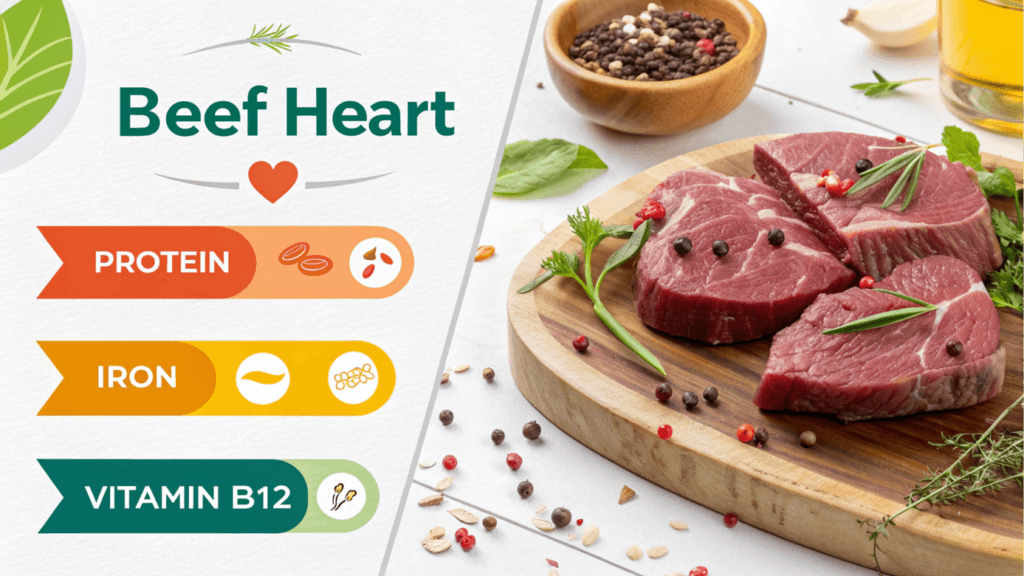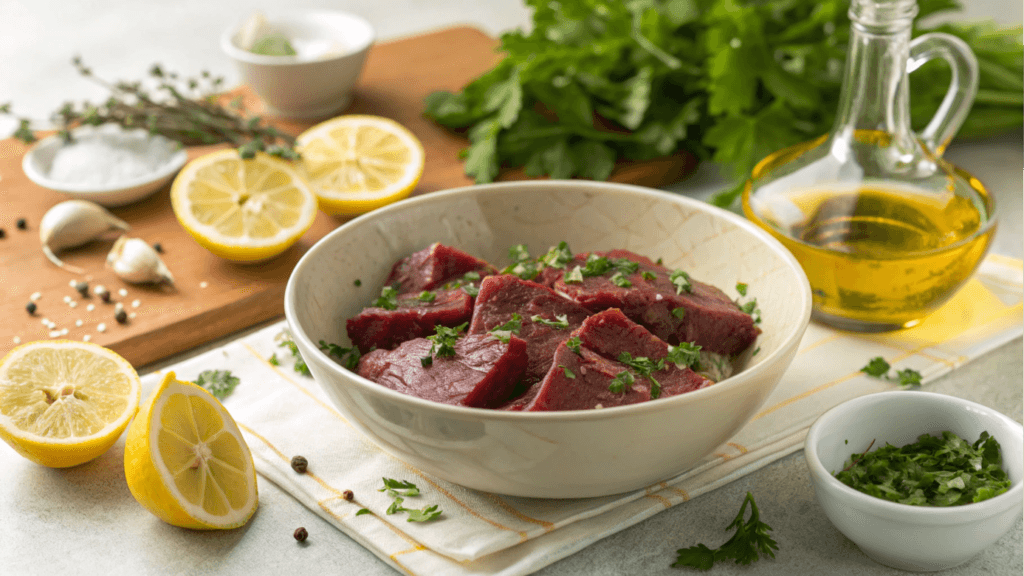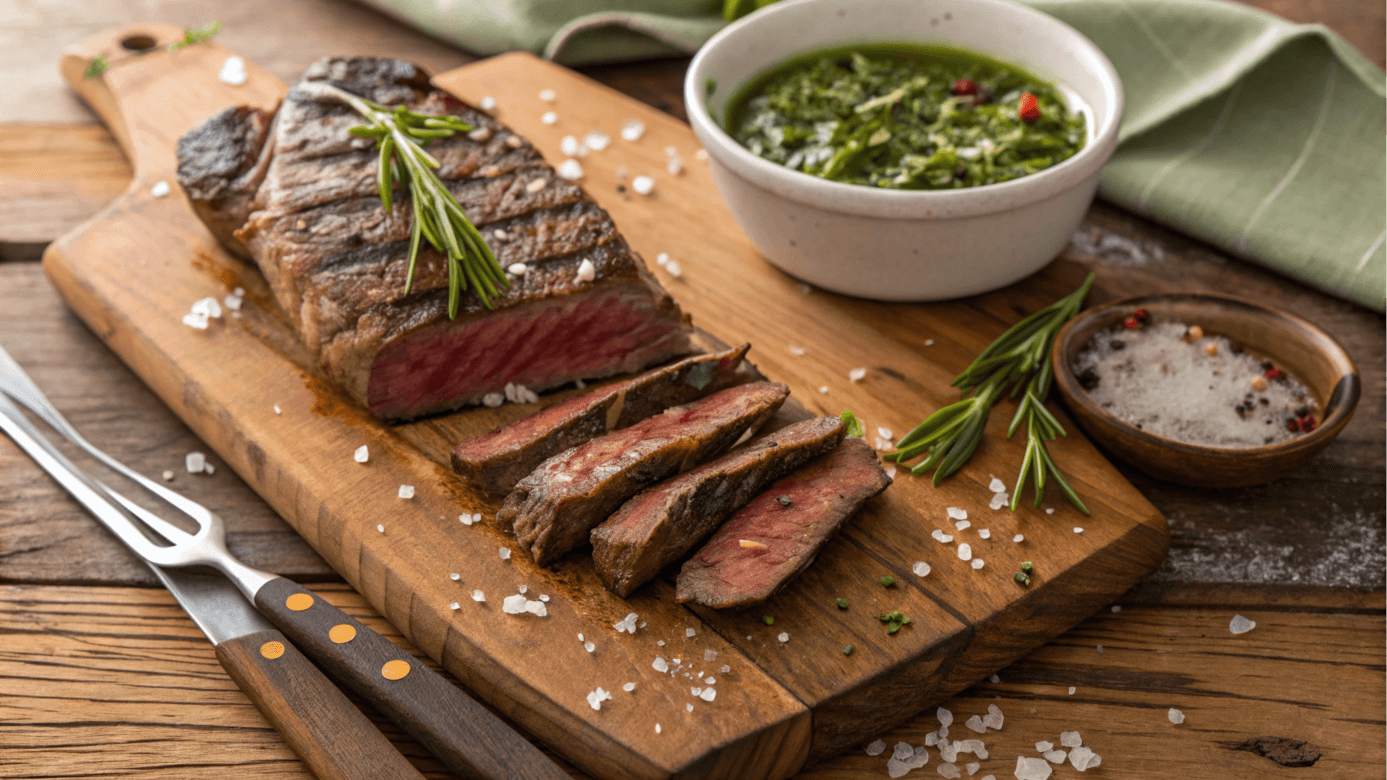Beef heart is a fascinating cut of meat—packed with nutrients, affordable, and surprisingly versatile. Yet, despite its benefits, many people shy away from adding it to their plates. Why don’t more people eat beef heart? The answer is layered, involving cultural norms, psychological barriers, and a general lack of familiarity with this nutritional powerhouse.
This article explores why beef heart isn’t as popular as other cuts, dives into its rich nutritional value, and offers practical tips for incorporating it into meals. Whether you’re a curious foodie or someone considering budget-friendly protein options, this guide will demystify beef heart and its place in the culinary world.
Introduction to the Popularity Gap
What is Beef Heart?
Beef heart, as the name suggests, is the heart of a cow. Classified as organ meat, it shares similarities with traditional muscle cuts, as the heart is essentially a dense, well-worked muscle. It has a texture and flavor profile reminiscent of steak, but with a richer, slightly more pronounced taste.
Unlike other offal, such as liver or kidney, beef heart isn’t overly “gamey,” which makes it more accessible to newcomers. It’s often described as a hidden gem in the culinary world, prized by chefs who champion nose-to-tail cooking.
It has a texture and flavor profile reminiscent of steak, but with a richer, slightly more pronounced taste. For an in-depth comparison, check out Is Beef Heart Better Than Beef?.
Why Is Beef Heart Less Popular?
Despite its many perks, beef heart isn’t as widely embraced. The main reasons boil down to a mix of cultural conditioning and misconceptions. In many Western diets, there’s a tendency to stick with familiar cuts—steaks, roasts, and ground beef. Organ meats, including beef heart, are often relegated to the sidelines due to outdated perceptions that they’re “poor man’s food.”
Another hurdle is a lack of education. Many people simply don’t know how to prepare beef heart or assume it’s too complicated to cook. However, with a little guidance, beef heart can become a go-to ingredient for delicious, budget-friendly meals.
Cultural Influences on Food Preferences
Historical Trends in Organ Meat Consumption
Historically, organ meats, including beef heart, were a staple in many diets around the world. During times of scarcity, no part of the animal was wasted. From hearty stews to roasted delicacies, nose-to-tail cooking was the norm. Beef heart, prized for its rich flavor and nutritional value, often found its way into traditional dishes.
However, as societies industrialized and food became more abundant, preferences shifted toward muscle cuts, which were marketed as premium options. Organ meats, on the other hand, gained a reputation as less desirable, often being associated with lower socio-economic status. This cultural shift laid the groundwork for today’s hesitation toward beef heart.
Modern Western Diets and Limited Variety
In Western diets, convenience and familiarity often trump variety. Supermarkets typically showcase muscle cuts like steaks, ground beef, and ribs, while organ meats are relegated to specialty stores or ignored altogether.
This limited exposure reinforces the question: Why don’t more people eat beef heart? Without regular availability or awareness of its benefits, beef heart remains outside the mainstream. Moreover, fast food and processed meals have further narrowed palates, making the idea of cooking organ meats seem foreign or unnecessary.
Nutritional Value of Beef Heart
Why Beef Heart is a Nutritional Powerhouse
Beef heart is a nutritional goldmine. It’s leaner than many traditional cuts of beef yet packed with high-quality protein, essential for building and repairing tissues. Additionally, it’s loaded with iron, which supports healthy blood and energy levels, and vitamins like B12, critical for brain and nervous system function.

What sets beef heart apart is its abundance of Coenzyme Q10 (CoQ10), a powerful antioxidant that promotes cardiovascular health. To learn more about its rich flavor profile, explore Does Heart Taste Like Beef?.
Comparing Beef Heart to Muscle Cuts
When comparing beef heart to popular cuts like ribeye or sirloin, the differences are striking. While ribeye is known for its marbling and high-fat content, beef heart is significantly leaner, making it a lower-calorie choice. Despite being lean, it doesn’t skimp on flavor or texture, offering a robust, beefy taste similar to a well-cooked steak.
With its superior nutrient profile and affordability, beef heart challenges the narrative that only prime cuts deserve a spot on the dinner table. Yet, why don’t more people eat beef heart? The answer lies not in its quality, but in the cultural and psychological barriers surrounding it.
Psychological and Social Barriers
The ‘Yuck Factor’: Psychological Resistance
One major reason why don’t more people eat beef heart is the psychological barrier often dubbed the “yuck factor.” Many individuals find the idea of consuming organ meats unappealing simply because they’re not used to it. Unlike a steak or burger, which are normalized in modern diets, beef heart triggers thoughts of unfamiliarity, making it less appetizing at first glance.
This aversion is deeply rooted in cultural and social conditioning. For decades, organ meats have been stigmatized, perceived as undesirable or “lesser” compared to premium cuts. This perception persists even though beef heart is nutrient-dense and flavorful. Overcoming this barrier involves exposure, education, and a shift in mindset.
Social Perception and Stigma
Society plays a significant role in shaping dietary choices. In many Western cultures, beef heart and other organ meats are often associated with older generations or economically disadvantaged groups. This stigma has relegated such meats to a niche market, further alienating younger consumers who are influenced by mainstream trends.
However, global cuisines offer a contrasting perspective. From Peruvian anticuchos to German sausages, beef heart is celebrated for its rich taste and culinary versatility. By learning from these traditions, we can reframe how we view this underappreciated cut.
For more inspiration on incorporating organ meats into your meals, check out our article on beef heart recipes.
Culinary Challenges of Cooking Beef Heart
Common Misconceptions About Cooking Beef Heart
A common misconception is that beef heart is difficult to cook. In reality, it’s no more complicated than preparing a steak or roast. The key is to understand its texture and use the right techniques. Many people assume organ meats are tough or “gamey,” but with proper preparation, beef heart is tender and delicious.
Marinating is one of the best ways to enhance flavor and ensure tenderness. Acidic ingredients like vinegar or citrus help break down the meat’s fibers, while spices and herbs add depth to its natural beefy taste.

Practical Tips for Cooking Beef Heart
Cooking beef heart doesn’t require fancy skills or equipment. Grilling is a popular method, as it locks in moisture and creates a smoky, caramelized crust. For stews or braises, slow cooking allows the heart to absorb flavors from broths and seasonings.
Slicing the heart thinly and stir-frying it with vegetables is another quick and easy option. This approach makes it a practical choice for weeknight dinners or meal prep. With a little creativity, beef heart can fit seamlessly into your culinary repertoire.
For step-by-step inspiration on how to include it in recipes, visit Beef Heart Recipes.
Economic and Environmental Considerations
Cost Benefits of Choosing Beef Heart
When it comes to affordability, beef heart stands out as a budget-friendly option. Compared to popular cuts like ribeye or sirloin, it’s significantly cheaper per pound while offering comparable nutritional value. This makes it an excellent choice for families and individuals looking to save money without compromising on quality.
Yet, why don’t more people eat beef heart? The answer often lies in a lack of awareness. Many people simply don’t realize that beef heart is not only economical but also versatile enough to replace pricier cuts in a variety of recipes. By including it in their diet, consumers can enjoy high-protein, nutrient-packed meals without breaking the bank.

Environmental Impact of Organ Meat Consumption
Embracing organ meats like beef heart isn’t just cost-effective; it’s also environmentally conscious. Meat production has a significant environmental footprint, and utilizing every part of the animal—nose-to-tail eating—reduces waste and maximizes resources.
By choosing beef heart, consumers contribute to a more sustainable food system. This practice supports ethical eating by honoring the entire animal, rather than focusing solely on muscle cuts. It’s a small step with a big impact, aligning with the growing movement toward reducing food waste and supporting sustainability.
FAQs
Is Beef Heart Safe to Eat?
Yes, beef heart is perfectly safe to eat when prepared properly. Like any meat, it should be handled and cooked correctly to ensure food safety. Freezing it for at least 24 hours or cooking it thoroughly eliminates potential bacteria, making it as safe as any other cut of beef.
For those wondering why don’t more people eat beef heart, concerns about safety are often based on misconceptions. With simple preparation techniques, beef heart can become a staple in your kitchen.
What Does Beef Heart Taste Like?
Beef heart tastes surprisingly similar to steak, with a slightly richer and more intense flavor. Its dense texture adds a satisfying chew, making it a great option for hearty dishes. Unlike other organ meats, it doesn’t have a “gamey” taste, which makes it accessible even to those new to offal.
How Can You Include Beef Heart in Your Diet?
Incorporating beef heart into your diet is easier than you might think. Start with familiar recipes, like grilling or slow cooking it with your favorite spices. For something quick, slice it thinly and add it to stir-fries or tacos. Its versatility means it can easily adapt to various cuisines, making it a great way to add variety to your meals.
Encouraging a Change in Perspective
How to Make Beef Heart More Mainstream
One way to answer the question, Why don’t more people eat beef heart?, is by examining how we can normalize it in everyday cooking. For starters, grocery stores and restaurants could feature beef heart more prominently, alongside recipes or preparation tips. Accessibility and visibility are key to sparking interest and reducing stigma.
Chefs and food influencers can also play a big role by showcasing creative ways to use beef heart. When people see it incorporated into delicious dishes, they’re more likely to give it a try. Hosting tastings or adding beef heart to restaurant menus as a specialty item could further encourage adventurous eaters to explore its potential.
The Role of Education and Exposure
Education is vital in breaking down the barriers surrounding beef heart. Many people hesitate to try it because they don’t know how to cook it or are unsure about its taste. Providing simple recipes, cooking demonstrations, and nutritional information can bridge this gap.
Cultural exposure also helps. Highlighting dishes from cuisines where beef heart is celebrated—like Peruvian anticuchos or German sausages—can inspire curiosity and appreciation. With greater awareness, the narrative shifts from “What is it?” to “When can I try it?”
Conclusion
Beef heart is an overlooked treasure, offering affordability, sustainability, and exceptional nutrition. While cultural and psychological barriers have kept it from the spotlight, it’s time to change the conversation. Why don’t more people eat beef heart? The reasons are clear: unfamiliarity, stigma, and lack of exposure. But the solution is equally simple—education, accessibility, and a willingness to explore new flavors.
So, why not give beef heart a try? Whether you grill it, stew it, or slice it thin for a stir-fry, this nutrient-rich cut is bound to surprise you. Take the leap, and discover a new way to enjoy the full bounty of beef.


3 thoughts on “Why Don’t More People Eat Beef Heart? Nutritional Insights & Tips”